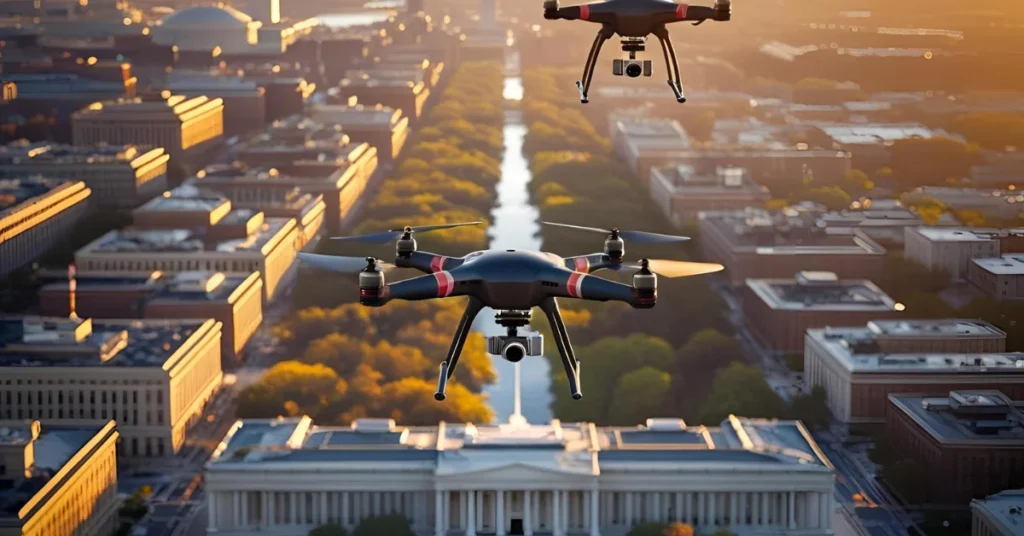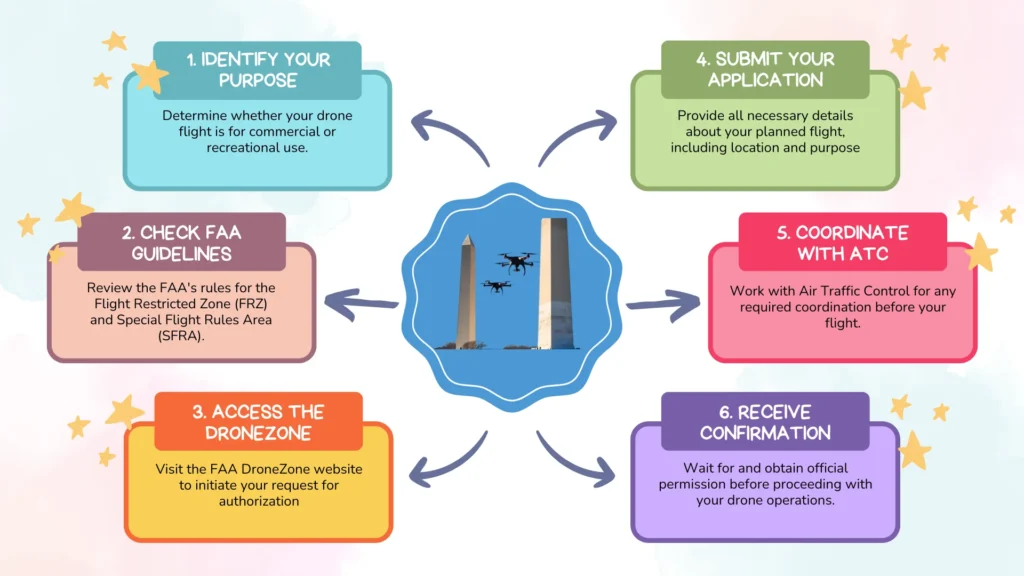Why Drone Operations near Washington, D.C. are prohibited, and the broader SFRA is heavily restricted by FAA?
Overview
Washington, D.C., is a special place with many important buildings and events. Because of this, it has been designated a “No Drone Zone” by the Federal Aviation Administration (FAA).
This means that no one—whether you are flying a drone as a hobby or using it for business—can operate a drone in the Flight Restricted Zone (FRZ) around the city.
Additionally, the wider Special Flight Rules Area (SFRA) has many restrictions as well.
Drone Operations Near Washington, D.C: Know the Boundaries
Flight Restricted Zone (FRZ) – 15 Nautical Miles
In the FRZ, which extends for 15 nautical miles from the D.C. area, there are absolutely no drone flights allowed.
The only exceptions to this rule are for federal government use. This area includes critical sites such as the White House and the Capitol Building.
Outer SFRA – 15 to 30 Nautical Miles
In the outer SFRA, located between 15 and 30 nautical miles from Washington, D.C., commercial drone pilots (those flying under Part 107 regulations) can request permission to fly.
This request can be made through the FAA’s DroneZone, an online portal. However, recreational drone pilots typically cannot fly here unless they are at FAA-recognized flying fields.
Nearby Airports of Concern
This restricted area is close to several important airports:
- Ronald Reagan Washington National Airport (DCA)
- Andrews Air Force Base
- Joint Base Anacostia-Bolling
These locations have high traffic, significantly increasing the need for safety and security.
Getting Legal Authorization
If you’re a commercial drone pilot wanting to fly in the SFRA, the first step is to use the FAA DroneZone to request:
- Airspace waivers (permission to operate in restricted areas)
- Air Traffic Control (ATC) coordination
It may also be helpful to partner with a representative from the FAA Safety Team (FAASTeam) to get assistance, especially for unique situations like filming or inspections.
Real-Life Consequences

The rules aren’t just words on paper; they are backed by real enforcement. For instance, in 2022, a recreational drone pilot was fined $5,000 for flying without permission from Anacostia Park.
Additionally, in 2024, the FAA issued a public warning after unauthorized drone flights were detected near Arlington Cemetery during Memorial Day—a time when many people come to pay their respects.
As FAA spokesperson Sarah Johnson said, “We take violations of these airspace restrictions seriously. Not only do they pose risks to public safety, but they can also disrupt important national ceremonies.”
Best Practices for Drone Pilots
To stay safe and legal, here are some best practices for anyone wanting to fly a drone near D.C.:
- Avoid flying within 30 nautical miles of D.C. unless you have explicit permission.
- Stay updated on Temporary Flight Restrictions (TFRs) and Notices to Air Missions (NOTAMs), which can change frequently.
- Use geo-fencing apps and UAS Facility Maps for planning any drone missions, ensuring you stay within allowed areas.
How to Get Permission to Drone Operations

Note: Always stay informed about temporary flight restrictions (TFRs) that may affect your flight plans.
Resources
For more information about the drone rules in Washington, D.C., you can check out:
- FAA No Drone Zone – Washington D.C.
- DroneZone Access Portal
Driving home the importance of these rules, FAA Administrator John Smith stated, “Drones can be wonderful tools for creativity and innovation, but it’s essential to fly responsibly. Safety should always come first.”
Being aware and respectful of these regulations helps keep everyone safe while preserving the integrity of this historic city.
Source: FAA



